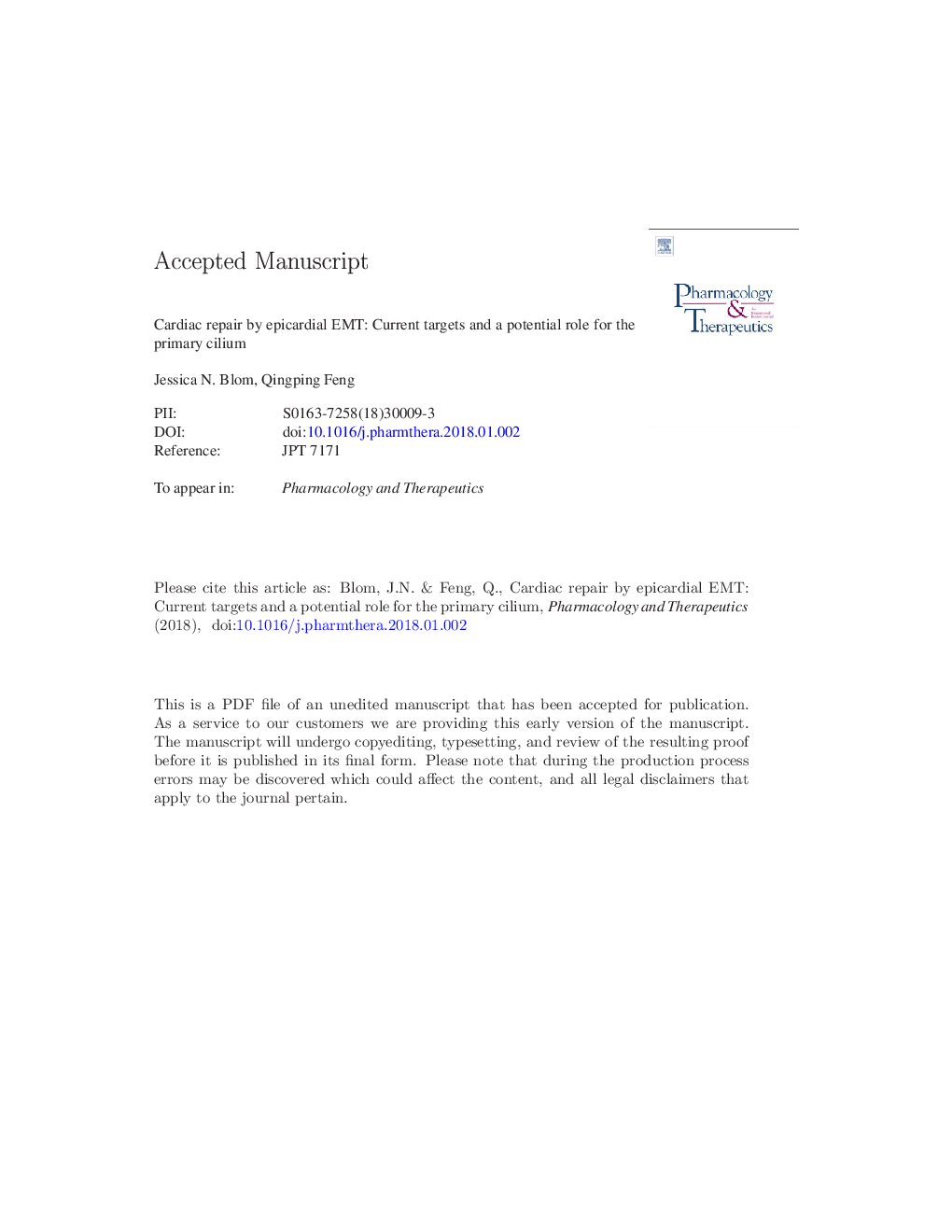| Article ID | Journal | Published Year | Pages | File Type |
|---|---|---|---|---|
| 8536820 | Pharmacology & Therapeutics | 2018 | 58 Pages |
Abstract
Despite therapeutic advances that have prolonged life, myocardial infarction (MI) remains a leading cause of death worldwide and imparts a significant economic burden. The advancement of treatments to improve cardiac repair post-MI requires the discovery of new targeted treatment strategies. Recent studies have highlighted the importance of the epicardial covering of the heart in both cardiac development and lower vertebrate cardiac regeneration. The epicardium serves as a source of cardiac cells including smooth muscle cells, endothelial cells and cardiac fibroblasts. Mammalian adult epicardial cells are typically quiescent. However, the fetal genetic program is reactivated post-MI, and epicardial epithelial-to-mesenchymal transition (EMT) occurs as an inherent mechanism to support neovascularization and cardiac healing. Unfortunately, endogenous EMT is not enough to encourage sufficient repair. Recent developments in our understanding of the mechanisms supporting the EMT process has led to a number of studies directed at augmenting epicardial EMT post-MI. With a focus on the role of the primary cilium, this review outlines the newly demonstrated mechanisms supporting EMT, the role of epicardial EMT in cardiac development, and promising advances in augmenting epicardial EMT as potential therapeutics to support cardiac repair post-MI.
Keywords
ncRNAPCPMCP-1HIF-1αlncRNAsGSK3βECMMEG3WntPDGFHGFTβ4SCFSMORetinoid X receptorsEndMTFollistatin-like 1IFTRXRsWT1FSTL1Tbx18TGF-βPI3KmiRNAsMmpsbFGFEGFBMSCsIGFRARsNon-coding RNALong non-coding RNAsRTKsMyocardial infarctionHyaluronic acidEndothelial-to-mesenchymal transitionEpicardiumTransforming Growth Factor BetaCardiac repairEMTThymosin beta-4Hedgehogintraflagellar transportShhRALDHRetinaldehyde dehydrogenaseRetinoic acidMetastasis-associated lung adenocarcinoma transcript 1microRNAsCardiac progenitor cellsSmoothenedsonic hedgehoghypoxia-inducible factor 1αepidermal growth factorHepatocyte growth factorVascular endothelial growth factorVascular Endothelial Growth Factor (VEGF)platelet derived growth factorbasic fibroblast growth factorInsulin-like growth factorStem Cell FactorPhosphatidylinositol 3-kinasePlanar Cell PolarityExtracellular matrixMALAT1Matrix metalloproteinasesBMPmonocyte chemoattractant protein 1Bone morphogenetic proteinPtchPatchedmaternally expressed gene 3epithelial-to-mesenchymal transitionGlycogen synthase kinase 3βreceptor tyrosine kinasesretinoic acid receptors
Related Topics
Health Sciences
Pharmacology, Toxicology and Pharmaceutical Science
Pharmacology
Authors
Jessica N. Blom, Qingping Feng,
